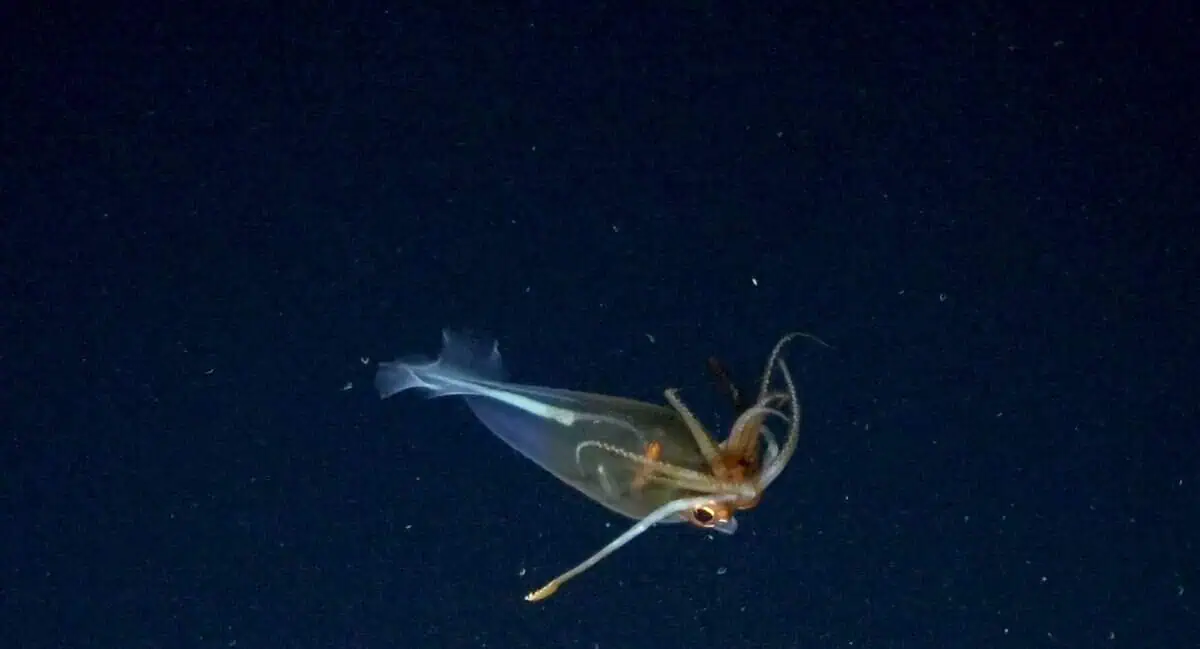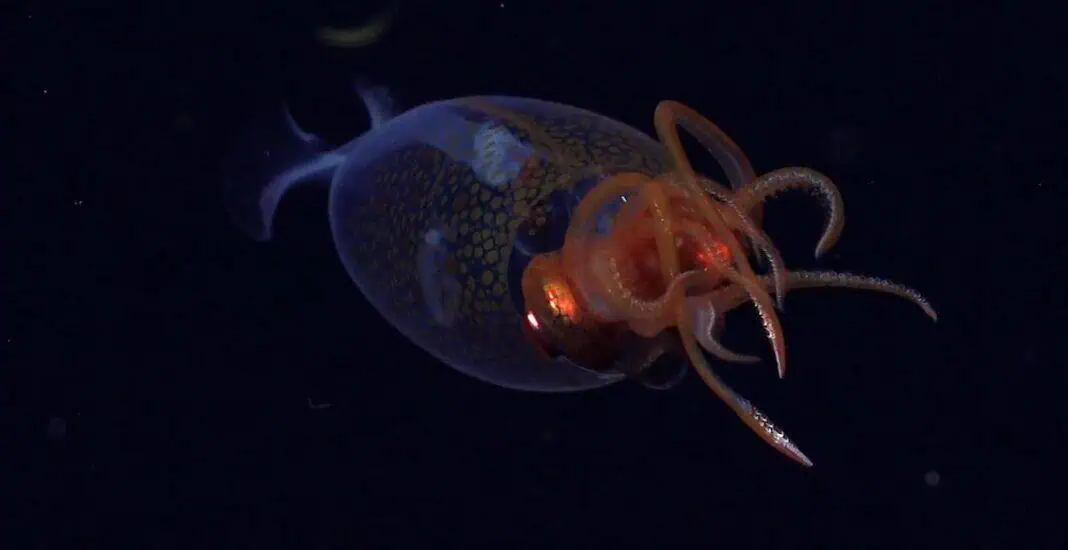An international team of scientists was the first to film the colossal squid in its natural environment.
The 30-centimeter juvenile squid (nearly one foot long) was captured on video at a depth of 600 meters (1968 feet) by the Schmidt Ocean Institute’s remotely operated vehicle (ROV) SuBastian. The sighting occurred on March 9 on an expedition near the South Sandwich Islands in the South Atlantic Ocean.
This year is the 100-year anniversary of the identification and formal naming of the colossal squid (Mesonychoteuthis hamiltoni), a member of the glass squid family Cranchiidae.
The 35-day expedition that captured the footage of the colossal squid was an Ocean Census flagship expedition searching for new marine life – a collaboration between Schmidt Ocean Institute, the Nippon Foundation-Nekton Ocean Census and GoSouth, a joint project between the UK’s University of Plymouth, Germany’s GEOMAR Helmholtz Centre for Ocean Research and the British Antarctic Survey.
According to Dr. Kat Bolstad of the Auckland University of Technology, one of the independent scientific experts the team consulted to verify the footage:
“It’s exciting to see the first in situ footage of a juvenile colossal and humbling to think that they have no idea that humans exist. For 100 years, we have mainly encountered them as prey remains in whale and seabird stomachs and as predators of harvested toothfish.”
Colossal squid are estimated to grow up to seven meters (23 feet) in length and can weigh as much as 500 kilograms (1100 lbs), making them the heaviest invertebrate on the planet. Little is known about the colossal squid’s life cycle, but eventually, they lose the see-through appearance of the juveniles. Dying adults have previously been filmed by fishermen, but have never been seen alive at depth.
According to the expedition’s chief scientist, Dr. Michelle Taylor of the University of Essex, who led The Nippon Foundation-Nekton Ocean Census team on the South Sandwich Islands expedition:
“It’s incredible that we can leverage the power of the taxonomic community through R/V Falkor (too) telepresence while we are out at sea. The Ocean Census international science network is proud to work together with the Schmidt Ocean Institute to accelerate species discovery and expand our knowledge of ocean life, live online with the world’s science community.”

In January, scientists captured footage of the glacial glass squid (Galiteuthis glacialis) during an expedition to the Southern Ocean near Antarctica. G. glacialis is another glass squid species that has never been seen alive in its natural environment before.
That expedition examined the seafloor after an iceberg the size of Chicago calved from the George VI ice shelf. On board was deep-sea expert Dr. Thom Linley from the Museum of New Zealand Te Papa Tongarewa, who alerted his colleague, Bolstad, as he watched the ROV footage from the vessel’s mission control room. In the footage, taken at 687 meters (2254 feet), the transparent G. glacialis positions its arms loosely above its head, similar to the cockatoo pose commonly observed in other glass squids.
Schmidt Ocean Institute Executive Director Dr. Jyotika Virmani said:
“The first sighting of two different squids on back-to-back expeditions is remarkable and shows how little we have seen of the magnificent inhabitants of the Southern Ocean. Fortunately, we caught enough high-resolution imagery of these creatures to allow the global experts, who were not on the vessel, to identify both species.”

